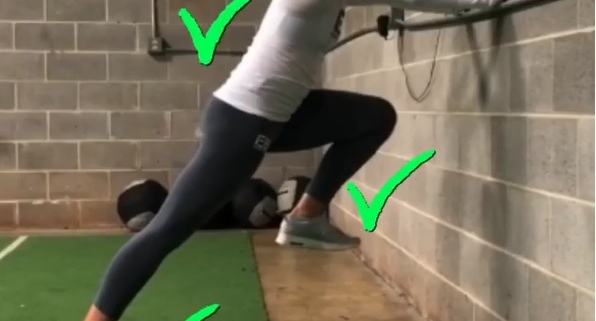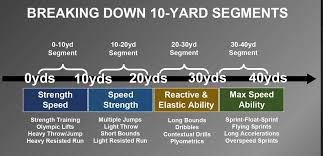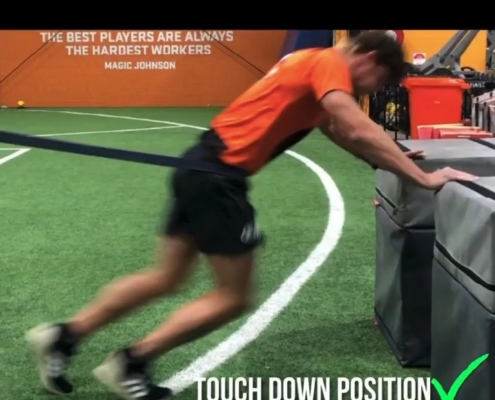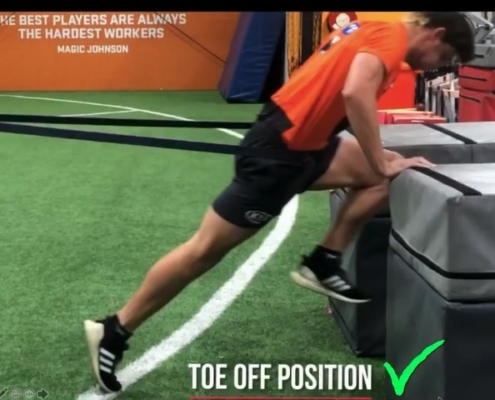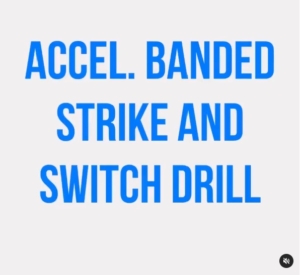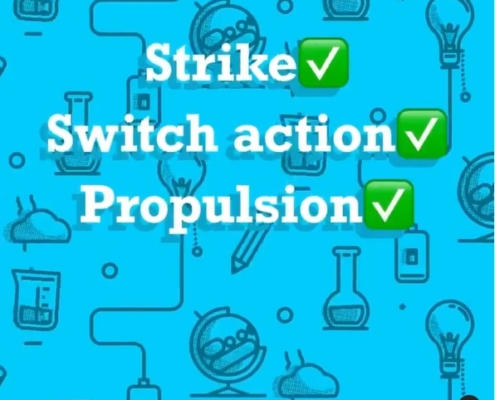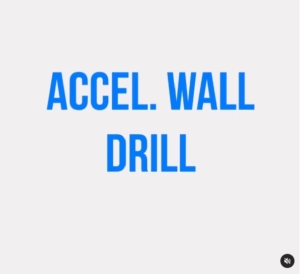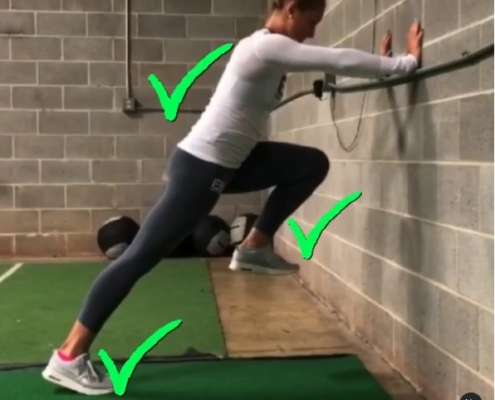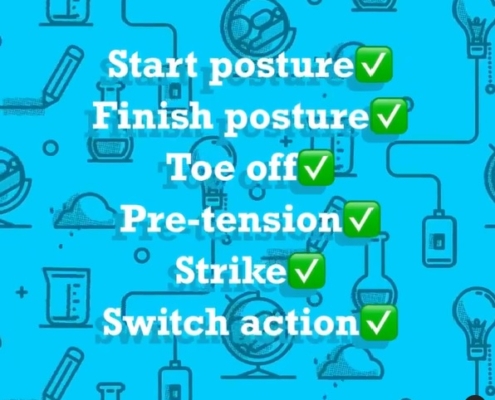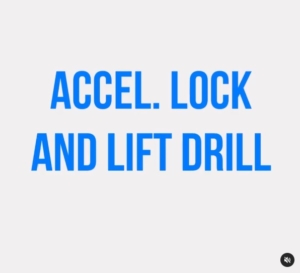Best Speed & Plyo Drills for Acceleration – Part 3
Best Speed & Plyo Drills for Acceleration
Background to the Blog
After I did the research on Tennis movement there were a few things that were left unresolved in my mind in terms of the best approach to develop movement, and specifically acceleration. In Part 1 I introduced the Force-Velocity Curve and rational for some of the jumping progressions I am considering to aid in Acceleration development. I also did a Part 1.2 where I looked at an aspect of the technical model for acceleration and different jump metrics related to acceleration.
As it relates to Acceleration (involving distances of up to 10m on a tennis court) I concluded that Maximal Strength and Explosive Strength would be more related to Acceleration:
- Heavy strength training
- Jump exercises that start from a stationary position (without counter movement) and emphasise concentric only actions – such as single leg hops to box
- Olympic lifts (80-90% 1RM)
- Explosive Back squats (60-80% 1RM)
- Heavy Sleds
As it relates to Tennis Footwork (most tennis movements within a few metres) I concluded that Ballistic Strength (aka speed-strength) and slow SSC plyos would be more related to Footwork:
- Loaded Jumps (20-60% 1RM)
- Med Ball throws
- Bounding (short bounds) – related in particular to a shot like the wide running forehand.
And I talked about the pros and cons of the 3 Hop for distance as a test/exercise.
You can’t do it well unless you can use your hip, knee and ankle. Because the first hop will be biased towards your hip, the second hop biased towards the ankle, and the landing biased towards the knee!
If you can 3 hop 3x your body height and stick it we are confident in your single leg capacity. It’s an LTA Primary exercise for Robustness – an exercise that gives confidence that the player has the force reserve in on court high cost deceleration actions (serves, change of direction and shots).
So to finish this blog series off (I haven’t forgot I still need to do part 2) I’d like to share some of the ‘drills’ you can use to aid in Acceleration development. In this series I’ll be focusing on Stationary drills. Some of the Heavy Throw/Jump and Heavy Resisted Runs that Cam mentions above can be saved for another blog.
The Drills
For this blog I’ll be sharing some useful insights in an old instagram post from Alex Natera on his preferred stationary drills to teach Acceleration.
Key shapes we need to hit can be summarised as ‘Touch Down’ and ‘Toe Off.’ Furthermore, Alex identifies eight technical boxes to tick for an ideal acceleration drill.
Banded Strike & Switch Drill
”When it comes to stationary acceleration drills I have a preference to use drills that “tick” as many technical “boxes” as possible.
The BANDED STRIKE & SWITCH DRILL is a drill for me that addresses a number of acceleration aspects that many others do not. The drill holds postures throughout that are appropriate to acceleration, the drill requires significant pre-tension in late recovery, a switching of the limbs, a forceful propulsion/drive of hip/knee/ankle and the drill accomplishes key acceleration positions at touch down and toe off.
I tend not to use drills that may address a certain technical aspect but completely defy other aspects. The Lock and Lift Drill and the Wall Drill can both be useful drills in their own right. They both tick technical boxes as highlighted in the clip.”
Wall Drill
”Wall Drills address a number of technical aspects but it is that excessive touch down position and the lack of propulsion/drive of hip/knee/ankle that see me using this drill sparingly and only in very specific circumstances.”
Wall Drills with a Switch address a number of additional technical aspects which seem to make it a better option for Alex. He just doesn’t give it a tick for Touch down position or Propulsion.
Lock and Lift Drill
”It is the near-to upright finishing posture and the lack of a strike in the Lock and Lift Drill that often preclude me from implementing them as a viable drill to assist in acceleration development.”
In this drill Alex only gives two ticks on his technical checklist – Start posture, and Touch down position.
Summing Up
It goes without saying I’m not a track & field coach, and Tennis players are not in pursuit of a perfect technical model for their sport either. There is definitely a difference between sports with that action as the force able to be generated by a sprinter for the first few steps under no fatigue creates a different shape to a court or field athlete running under more fatigue or with less intent.
Having said that acceleration requires the tennis athlete to have reasonable dorsiflexion range in order to achieve the shins roll we are looking for and if athletes don’t have this to get to that ankle lock position then the shin will always be limited in the angle it can achieve.
The drop into heel lock is an interesting one. Speaking to the elite track coach at the UKSCA conference he said: ”I’m not sure I’m fully onboard with it – is it a desirable action even if many people are doing it? Is it a default and not an actual trained thing to do? I’m not sure! If people are strong enough in their calf they can lock the ankle down pretty rapidly and get that stable base or utilise the elasticity without the elongation of the muscle tissue. Interesting and I will look at it a bit further.”
Personally I’ve had this debate with sprint coaches earlier in my career when I was curious about it – my summary is that the heel may touch down even with elite sprinters during some point in acceleration but the emphasis of the force with certainly be associated with a purposeful foot strike just behind the ball of the foot.
Hope you have found this article useful.
Remember:
- If you’re not subscribed yet, click here to get free email updates, so we can stay in touch.
- Share this post using the buttons on the top and bottom of the post. As one of this blog’s first readers, I’m not just hoping you’ll tell your friends about it. I’m counting on it.
- Leave a comment, telling me where you’re struggling and how I can help
Since you’re here…
…we have a small favor to ask. APA aim to bring you compelling content from the world of sports science and coaching. We are devoted to making athletes fitter, faster and stronger so they can excel in sport. Please take a moment to share the articles on social media, engage the authors with questions and comments below, and link to articles when appropriate if you have a blog or participate on forums of related topics. — APA TEAM

